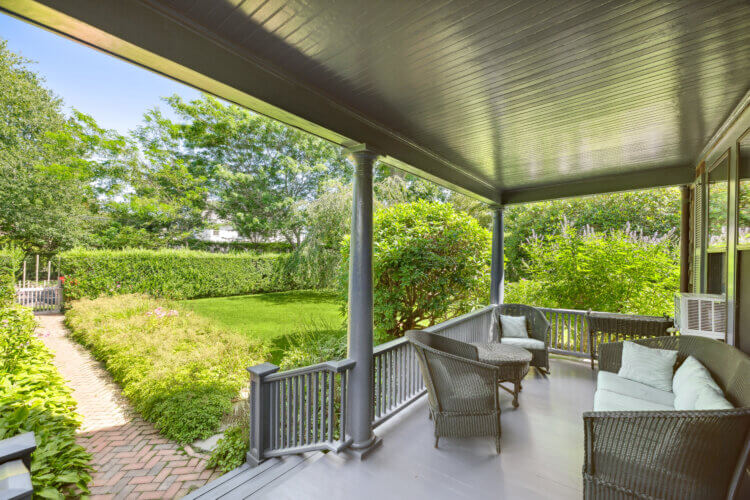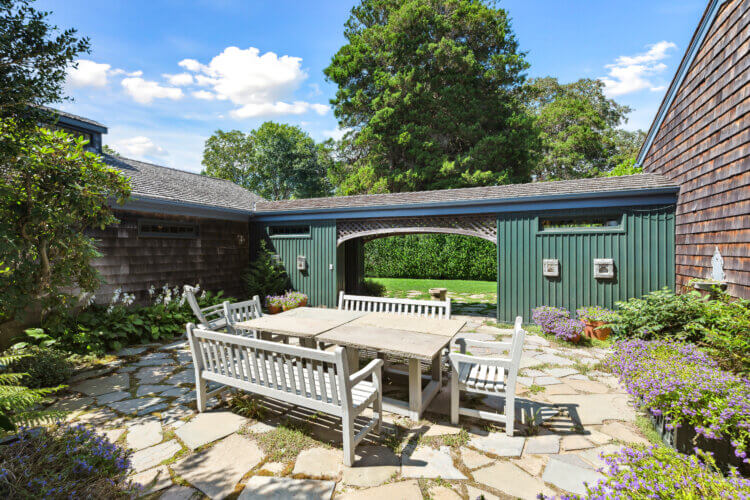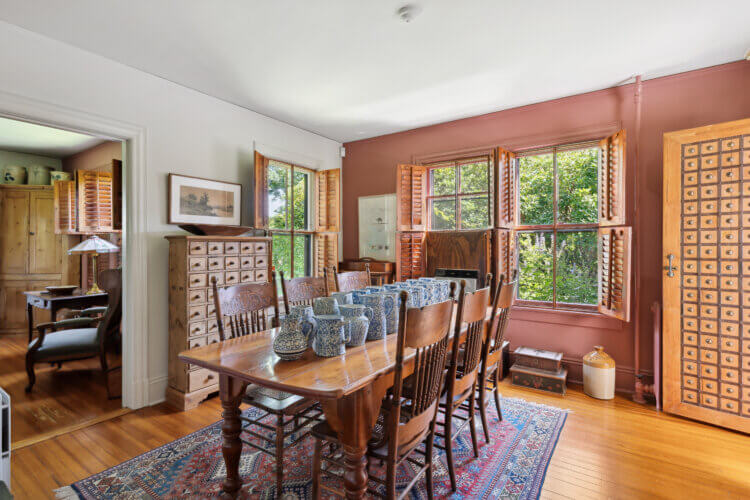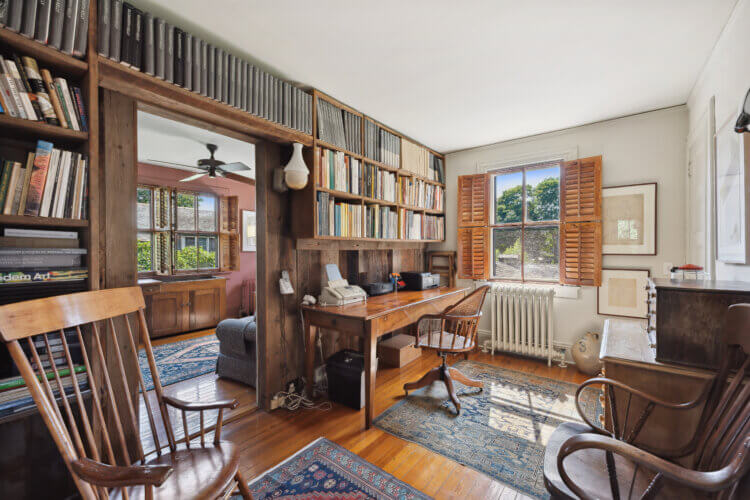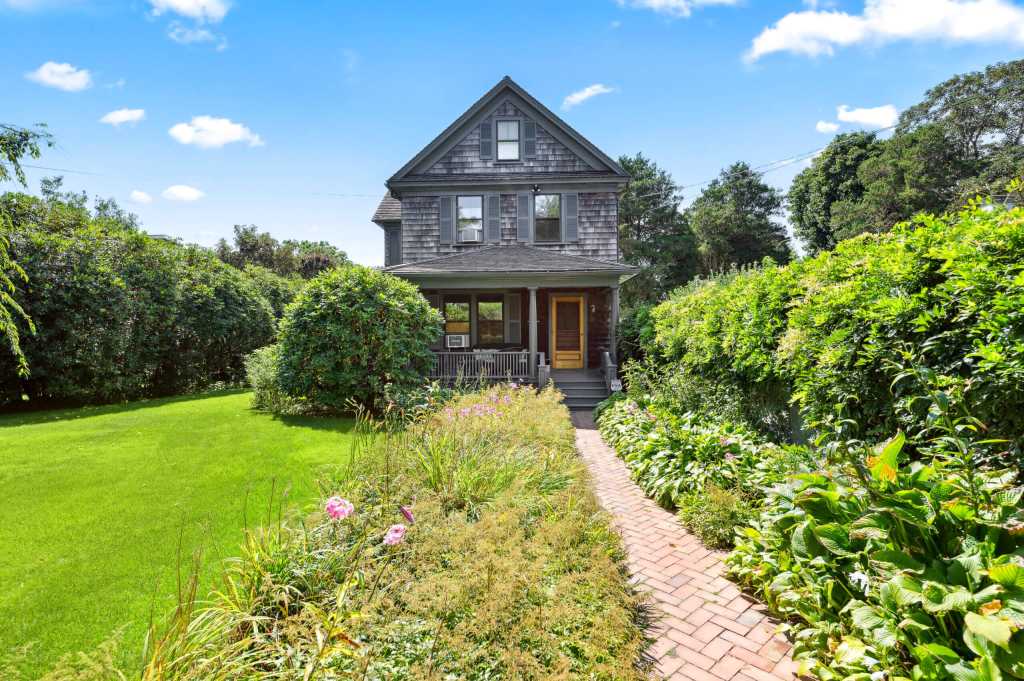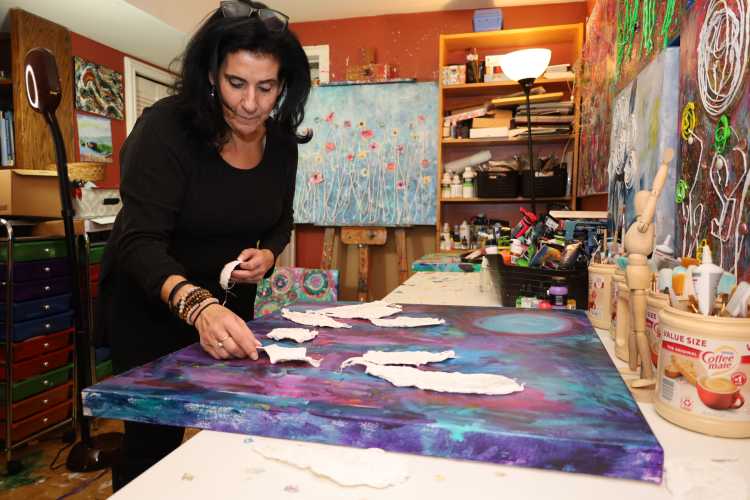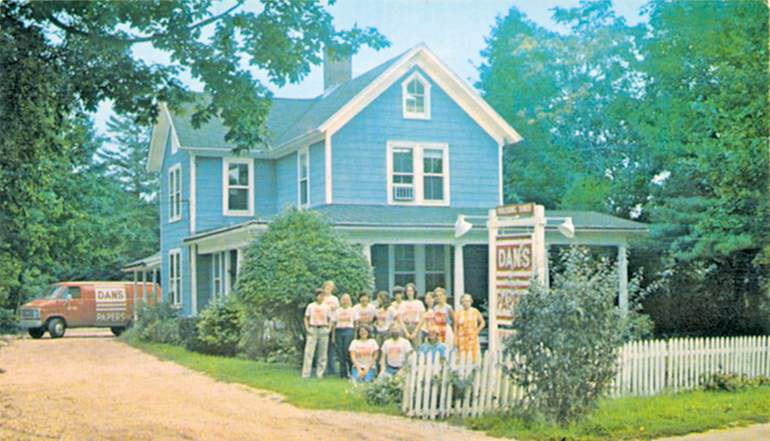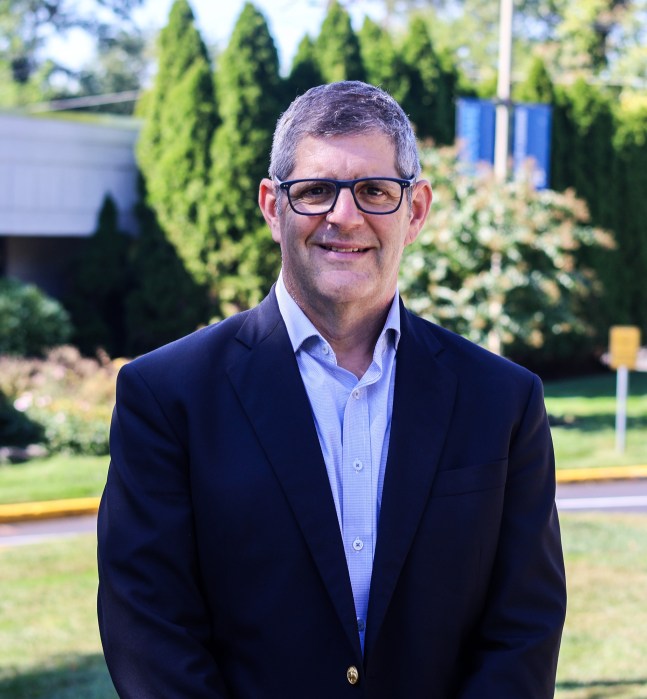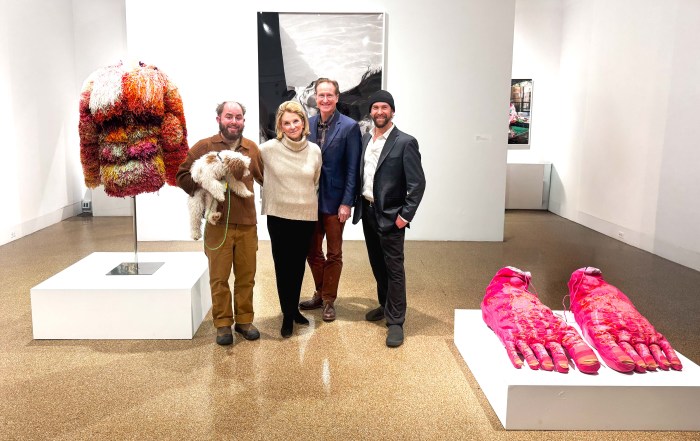On a quiet block about a half-mile east of Main Street in Southampton Village sits 65 Wooley Street, a tasteful early 20th-century traditional tucked neatly behind a fenced 0.51-acre lot that’s significantly deeper than it is wide.
From the street, the house and grounds are unassuming. Listed at $4,395,000, this is one of those properties that doesn’t open its kimono right away.
“A broker who saw the house called it ‘Sagaponack in Southampton,’” says Corcoran’s Pat Garrity, the listing agent. “The property is over 300 feet deep, there are incredible gardens and beautiful trees — you would never guess what was back there.”
Also not immediately apparent — and only subtly alluded to in Corcoran’s online listing — is the home’s impeccable artistic pedigree.
Built around 1916, the house has been owned since the late 1960s by the figurative and abstract artist Paul Waldman and his wife Diane, a former deputy director and senior curator of the Guggenheim Museum.
But the modern art roots run even deeper than that.
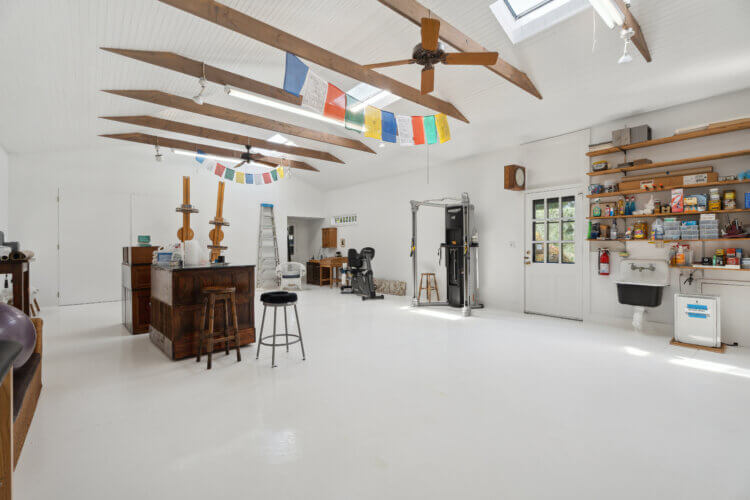
The Waldmans purchased the house in 1968 with the legendary pop artist Roy Lichtenstein, who, like the couple, was looking for a summer retreat at the time. In 1970, Lichtenstein decided he wanted a home of his own in Southampton, so the Waldmans bought out the then-45-year-old artist’s share and assumed full ownership of the property.
Asked why she chose not to mention the home’s connection to one of the giants of 20th-century art in Corcoran’s promotional materials, Garrity explains that she preferred to let the house and the grounds speak for themselves. “If a client is interested in the house, I’ll certainly tell them about its background,” she says. “But I think it’s more about the property than it is about the provenance.”
Before moving out, Lichtenstein helped Paul Waldman expand the original early-20th-century structure. The two friends built a large 24-by-40-foot artist’s studio adjoining the house. They also attached an existing standalone cottage/writer’s studio to the new studio via a breezeway, combining all four elements of the property — the original house, the newly built artist’s studio, the breezeway and the existing cottage — into a single unified structure.
The smaller cottage/writer’s studio was originally meant to serve as housing for Lichtenstein’s two sons, who lived briefly on the property. Eventually, the space was converted into Diane Waldman’s writing studio, where she wrote many of the Guggenheim’s exhibition catalogs. With its stone floor and cupola, the smaller studio now serves as a private flagstone garden room. Directly behind the studio is a shaded arbor overlooking lush English gardens and 135 feet of lawn space.

“The way the house and the structures tie into the landscape is just so beautifully done,” Garrity gushes. “You can tell that someone with an artistic eye put it all together.”
Garrity says that the flowing gardens, which were envisioned and planted by Paul Waldman himself, are one of her favorite things about the property. The realtor also points out that should the new owners be so inclined, the large lawn offers lots of room for the addition of a secluded, full-size swimming pool.
First listed on Aug. 21, the classic two-story traditional home offers approximately 2,300 square feet of living space. It features what Garrity describes as immaculate original details, and can be configured for either two or three bedrooms with a dining room. There is also an attic and an unfinished basement.
Garrity notes that the large artist’s studio built by Lichtenstein and Waldman is attached to the house in such a way that it could easily be configured to add more living space to the main home.
Though they are unlikely to be part of the sale, 65 Wooley Street is currently outfitted with a cornucopia of antiques and unique finds – objets d’art sourced both locally and from the Waldmans’ travels. These include custom teak shutters imported from India and the couple’s collection of Indian miniatures and Bennington pottery. In the rear of the house, the lush English garden envisioned and planted by Paul Waldman features eight ceramic birdhouses designed by the artist.
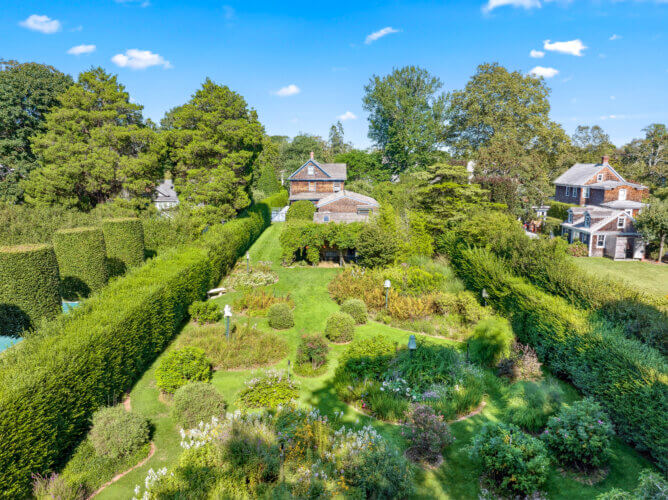
Given their positions as fixtures on the New York art scene, it’s not surprising that over the years, the Waldmans have hosted many art world luminaries at the property, including noted painter and sculptor Ellsworth Kelly, famed art dealer Leo Castelli and Guggenheim director Thomas Messer.
It’s impossible to know who will ultimately purchase the charming home at 65 Wooley Street. But given the property’s rich history, it’s a decent bet that the new owners will be art lovers.
Find more photos below.
This article appeared in the September 22, 2023, issue of Behind The Hedges. Read the full edition here. For more Hamptons real estate, click here.

